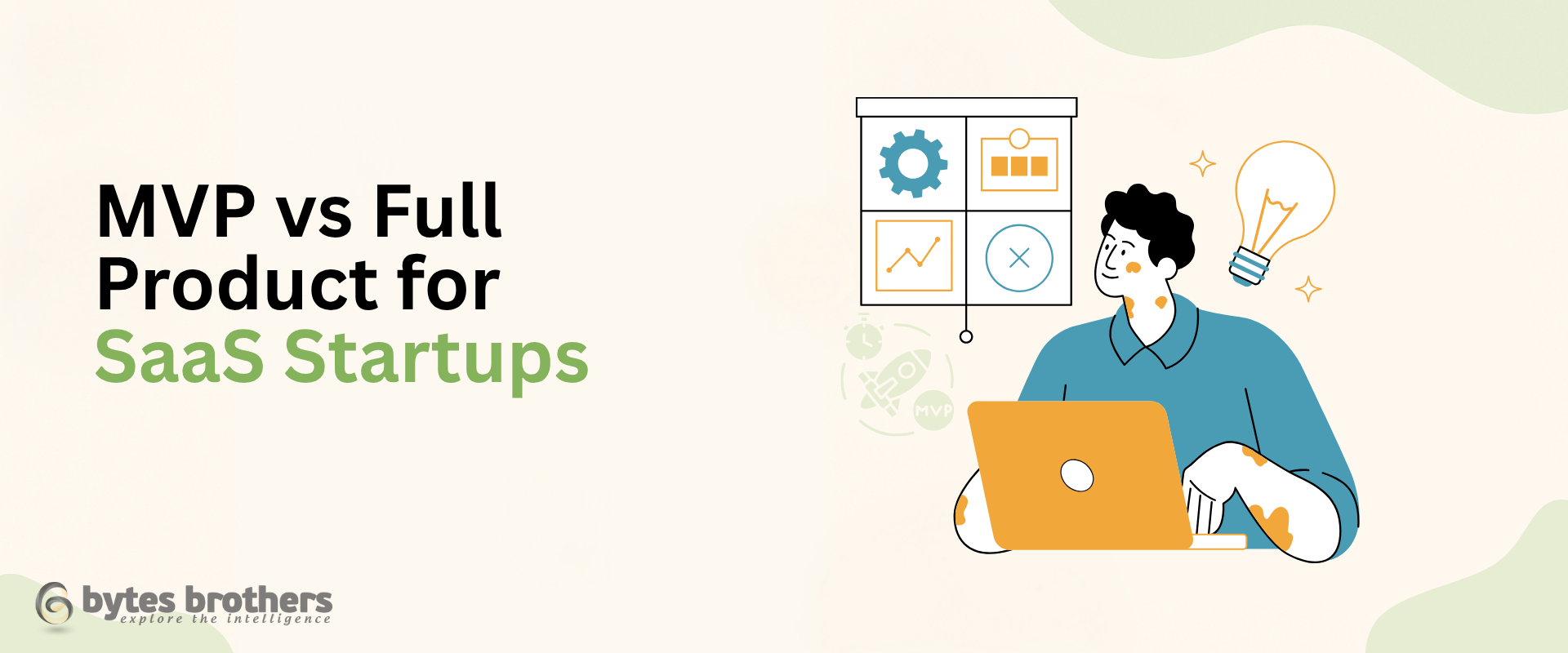MVP vs Full Product for SaaS Startups

SaaS founders face an early decision: build an MVP or develop the full product. The choice shapes timelines, budgets, and initial feedback loops. Wrong timing or wrong model leads to wasted cycles. This guide breaks down clear differences, selection factors, and practical guidance.
What Defines an MVP in SaaS?
An MVP delivers the core value of your software with minimal features. Focus stays on solving a specific problem. Teams prioritize speed, feedback, and validation. Most SaaS MVPs include user registration, one core function, and a feedback mechanism.
Characteristics of an MVP:
- Core functionality only
- Short development timeline
- Limited integrations
- Rapid testing and iteration cycles
- Use-case focused
What Defines a Full Product in SaaS?
A full product includes a complete feature set aimed at broader adoption. It covers various user personas, edge cases, and operational requirements. Product teams build for scale, compliance, performance, and longevity.
Characteristics of a Full Product:
- Multi-feature coverage
- Cross-platform support
- Third-party integrations
- Role-based access control
- Performance optimization
- Prepared for GTM operations
Key Differences: MVP vs Full Product
MVP vs Full Product Comparison
| Aspect | MVP | Full Product |
|---|---|---|
| Timeline | 3–6 weeks | 3–6 months or more |
| Cost | Low (bootstrapped or early-stage) | High (requires funding or revenue) |
| Feature Scope | 1–2 core features | Broad and deep |
| Feedback Cycle | Fast | Slower |
| Risk | Low investment risk | High risk without validation |
| Tech Stack | Lightweight | Enterprise-grade |
| Maintenance | Easy | Complex |
When to Build an MVP
Use an MVP when the idea lacks real-world validation. MVPs help test assumptions, discover edge use cases, and understand early user behavior. Founders use MVPs to:
-
- Pitch to investors with traction
- Evaluate core demand
- Fine-tune positioning
- Run low-cost experiments
Ideal for:
- Pre-seed or seed-stage startups
- Non-technical founders
- Market discovery phase
When to Build a Full Product
A full product fits well after clear validation. Teams use insights from MVP cycles to design robust systems. With funding secured, SaaS teams can invest in scalability, compliance, and customer experience.
Build full products when:
- MVP metrics show user retention
- Revenue exists or strong signals emerge
- Compliance or performance requirements exist
- Multiple buyer personas demand coverage
Risks of Skipping MVP Stage
Founders who skip MVP stages often misallocate resources. Risks include:
- Building wrong features
- Targeting wrong users
- High CAC with low LTV
- Long development timelines
- Burnout without market response
MVP-to-Full Product Transition Plan
A smart MVP includes planning hooks for scaling. Don’t write throwaway code. Instead, use modular architecture and plan upgrade paths.
Steps:
- Define success metrics for MVP
- Use feedback to rewrite product assumptions
- Reassess architecture for scale
- Extend feature sets
- Shift focus from usability testing to performance testing
Developer Considerations (Checklist)
A scalable MVP begins with developer discipline. Use this checklist:
Conclusion
Pick MVPs for speed, feedback, and clarity. Choose full products when validation supports scale. Each has a place.
Let your goals, funding stage, and user signals guide the call.
Founders often hesitate between building fast and building complete. A clear roadmap helps remove indecision. With the right saas-mvp-development approach, you can ship value early-then scale with purpose.